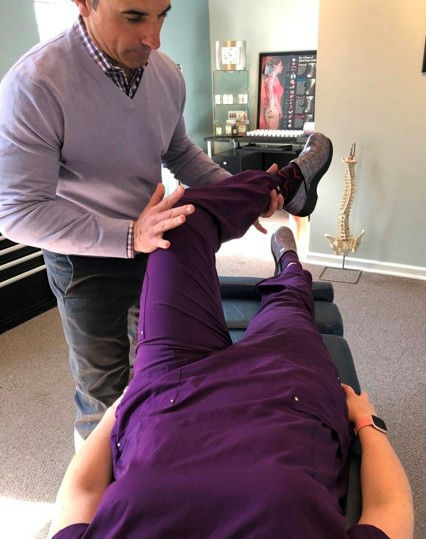Why your “low back” pain might not be from your low back
If your pain wraps from the low back to the top of the glute and into the hip, you might be dealing with Maigne’s Syndrome, also called thoracolumbar junction syndrome. It starts where the mid back meets the low back, at the thoracolumbar junction. Irritated nerves there can refer pain into the hip, groin, and buttock. It can look like a disc issue or SI joint trouble, which is why it gets missed.
Let’s walk through this like we’re troubleshooting with a friend at the kitchen table. We will use one example throughout. Meet Maya. She has stubborn hip and glute pain that flares when she sits, cleans the house, or twists to grab something from the car. Treating only her low back hasn’t helped. Here is what finally does.
Where the pain really starts
Small nerves exit the spine at the thoracolumbar junction, then run downward and pierce the fascia at the top edge of the pelvis, near the iliac crest. When that fascia is tight, those nerves can snag. That is called cluneal nerve entrapment. Picture a charging cable caught under a chair leg. The cable is fine, but the snag stops the current and everything feels “off” down the line.
For Maya, freeing the nerve both at the spine and at the fascia is the unlock. Three steps make the difference.
Step 1: Mobilize the thoracolumbar junction
If the joint segments around T12 to L2 are stiff, the nerve gets irritated. A chiropractor or physical therapist can assess and mobilize this area with gentle adjustments or specific joint mobilizations. Many people feel an immediate drop in the wraparound ache when this area moves again.
Can you self-mobilize a bit? Yes, with controlled movement. Think of cat cow variations focused on your mid to low back and slow foam rolling along the mid back while keeping the low back neutral. The goal is easy motion, not aggressive cracking.
Step 2: Release the fascia at the iliac crest
Right at the top of the pelvis the fascia can trap the cluneal nerves. Gentle fascial release at the iliac crest can ease that pressure and let the nerve glide. A skilled provider will use light to moderate pressure along the bony rim of the pelvis to free the tissue without bruising. This is often the missing link for people like Maya, because the symptoms live in the hip and glute even though the source begins higher.
Common questions
Is this sciatica? No. Sciatica travels down the back of the leg below the knee. Maigne’s pain often sits around the top of the glute, hip, or groin and may feel patchy or achy.
Does this mean I have a disc problem? Not necessarily. Maigne’s Syndrome can mimic a disc issue, but it is about nerve irritation at the thoracolumbar junction and fascial entrapment near the pelvis.
How fast should I feel relief? Many feel change within a week when they address both the joint and the fascia. Stubborn cases need several weeks of consistent care.








